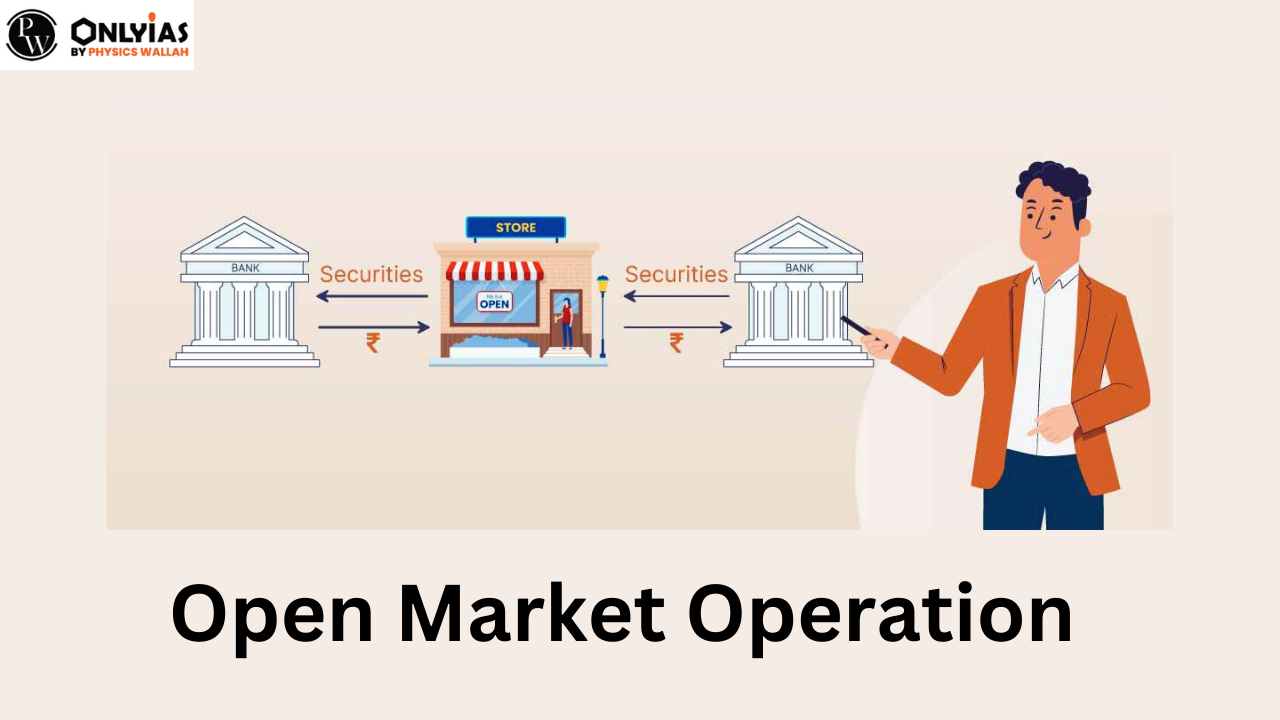![]() Ananya Gupta
Ananya Gupta
![]() August 26, 2023 08:08
August 26, 2023 08:08
![]() 4035
4035
![]() 0
0
OMO full form is Open Market Operation. It is a vital tool used by central banks to regulate money supply and interest rates. Discover how OMOs influence borrowing costs, interbank rates, and economic stability, making them a cornerstone of monetary policy.

Open Market Operations (OMO) is a fundamental tool employed by central banks to manage and regulate the money supply and interest rates in an economy. OMO involves the buying and selling of government securities (bonds) in the open market with the goal of influencing the level of bank reserves and thus impacting short-term interest rates.
Key points about Open Market Operations:
OMO stands for “Open Market Operations.” It refers to the monetary policy tool used by central banks to influence the money supply and manage interest rates in an economy by buying or selling government securities (bonds) in the open market.
| OMO Full Form | |
|---|---|
| Full Form | Open Market Operations |
| Definition | OMO refers to central bank actions of buying or selling government securities in the open market. |
| Purpose | Influence money supply, manage interest rates, and achieve monetary policy objectives. |
There are two primary types of Open Market Operations (OMO) based on the actions taken by central banks:
Permanent Open Market Operations (POMO):
Short-Term Open Market Operations (SOMO):
The working of Open Market Operations (OMO) involves the central bank’s actions in the open market to influence the money supply, short-term interest rates, and overall economic conditions. Here’s how it typically works:
Objective Setting:
The central bank determines its monetary policy objectives, such as controlling inflation, stabilizing the economy, or influencing interest rates.
Target Interest Rate:
The central bank sets a target for a specific short-term interest rate, often the federal funds rate in the case of the U.S. Federal Reserve.
Market Analysis:
The central bank analyzes the prevailing economic conditions, money supply, inflation, and other relevant factors.
Market Operations:
Based on its analysis and policy objectives, the central bank conducts open market operations by buying or selling government securities (bonds) in the open market.
Open Market Purchase (OMP):
If the central bank wants to increase the money supply and lower interest rates, it conducts an OMP by buying government securities from banks and financial institutions.
Open Market Sale (OMS):
If the central bank aims to decrease the money supply and raise interest rates, it conducts an OMS by selling government securities to banks and financial institutions.
Impact on Reserves and Interest Rates:
When the central bank buys securities, it pays for them by crediting the reserves of the selling banks. This increases the supply of money and reduces short-term interest rates.
When the central bank sells securities, it reduces the reserves of the purchasing banks. This decreases the money supply and raises short-term interest rates.
Market Response:
The increase or decrease in reserves and money supply affects the interbank lending market and, consequently, the short-term interest rates.
Transmission to the Economy:
Changes in short-term interest rates influence borrowing costs for consumers, businesses, and governments. Lower rates encourage borrowing and spending, while higher rates may discourage borrowing.
Policy Implementation:
The central bank continues to conduct OMOs as needed to achieve and maintain its target interest rate and policy objectives.
When the Central Bank engages in an expansionary policy by purchasing securities from banks, it effectively increases the money available within the banking system. This surplus of Central Bank funds circulates among different banks. As banks attempt to lend out these additional reserves, it affects the federal funds rate – the interest rate at which banks lend to each other.
When there’s an excess supply of reserves due to Central Bank actions, the competition among banks to lend them out leads to a decrease in the federal funds rate. Conversely, if there’s a shortage of money to lend, banks will raise the federal funds rate.
These Central Bank funds have a cascading effect on short-term interest rates. Banks adjust the interest rates they charge each other for loans with longer-term maturities. This interbank lending rate is known as the London Interbank Offered Rate (LIBOR). LIBOR serves as a fundamental benchmark for a variety of variable rate loans, including car loans, adjustable-rate mortgages, and monthly interest rates.
Central Bank actions influence the availability of funds in the banking system, which in turn affects short-term interest rates. These changes in short-term rates extend to other lending rates, as seen with LIBOR, thereby impacting borrowing costs for various forms of loans across the economy.
<div class="new-fform">
</div>

Latest Comments